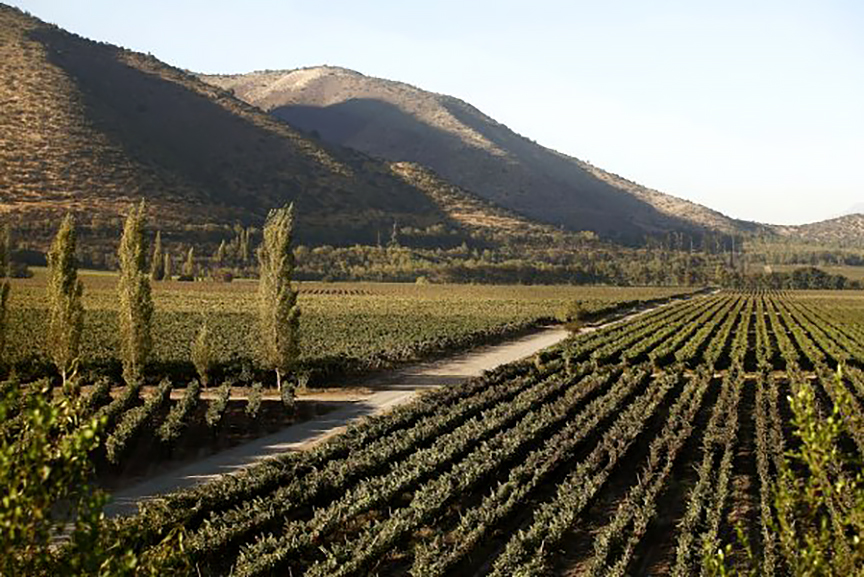Deep purple-black color; blackberry, black plum on the nose; blackberry, blueberry, cedar, plum on the palate.

Dry; well behaved tannins for a carménère; 99% carménère, 1% cabernet sauvignon. Good acidity for a red wine (3.41 pH); somewhat restrained alcohol at 13.1% ABV. Noticeable oak thanks to nine months in barrels after fermenting in stainless steel, including malolactic fermentation. Some vegetable elements flirt with green bell pepper, an element of carménère that you either enjoy or do not.
Peumo wines from the Cachapoal Valley consistently are rated among the best in Chile. The region is one of the oldest wine-producing regions in Chile. Carménère from Peumo typically are more full-bodied (although still graded as medium body), and this effort reflects that. In short, this is classic carménère from the spot on the Earth that produces apex examples of the variety, and this is almost pure carménère. If you want to decide if carménère is a wine you wish to enjoy, this is a good representative to try. You also can find carménère blended with significantly more cabernet sauvignon. Marcelo Papa is the head winemaker at Concha y Toro.

Carménère is a signature Chilean red searching for firm foothold in the wine firmament. It has elements of cab and merlot, but is neither one—not as tannin-assertive and bold as cab, not as mellow as merlot. It originated in Bordeaux, but today there are less than 20 acres of carménère planted in France; almost all the carménère in the world is grown in Chile. Chileans long thought their vines were merlot, but in 1994 DNA tests came back: nope, carménère. In this way, it is similar to malbec—largely pushed to the side in its native vineyards, it found new life and achieved loftier heights in the terroir of South America. Such is the amazing saga of wine and wine grapes throughout history.
Concha y Toro headquarters in Santiago, Chile, and is one of the global leaders in wine. The original vineyard was founded by Don Melchor de Santiago Concha y Toro and his wife, Emiliana Subercaseux in 1883. The original grapes came from Bordeuax. The vineyard was incorporated as a stock company in 1923, with shares sold on the Santiago stock market. In 1933, Concha y Toro began exporting wine through the port of Rotterdam, the Netherlands. In 1987, it partnered with U.S. importer Banfi Vintners, upgraded technology, and began its rise to a significant player on the world wine stage. In 1994, shares of Viña Concha began trading on the New York Stock Exchange.

Concha y Toro is not just a Chilean winemaker today. Their California brands include Fetzer, Bonterra, Five Rivers, Bel Arbor, Jekel Vineyards, Coldwater Creek, Sanctuary, and Little Black Dress.
Concha y Toro Entre Cordillera Peumo Vineyard Terrunyo Carménère Block 27 2016 is not quite cabernet sauvignon, not quite merlot, but suggests elements of both, reflecting its Bordeaux heritage. It is like it or don’t like it wine, with Chileans hoping it rise achieves status that malbec has reached in Argentina. Give it a try to see where you land in the debate. The meaty nature of carménère makes it classic pairing with barbecue and other rich, red meats with sweet-and-sour seasoning; chicken mole, lamb with mint sauce, beef stew, pizza, pastas with body and texture, goat cheese, mozzarella, pepper jack cheese. $20-25








